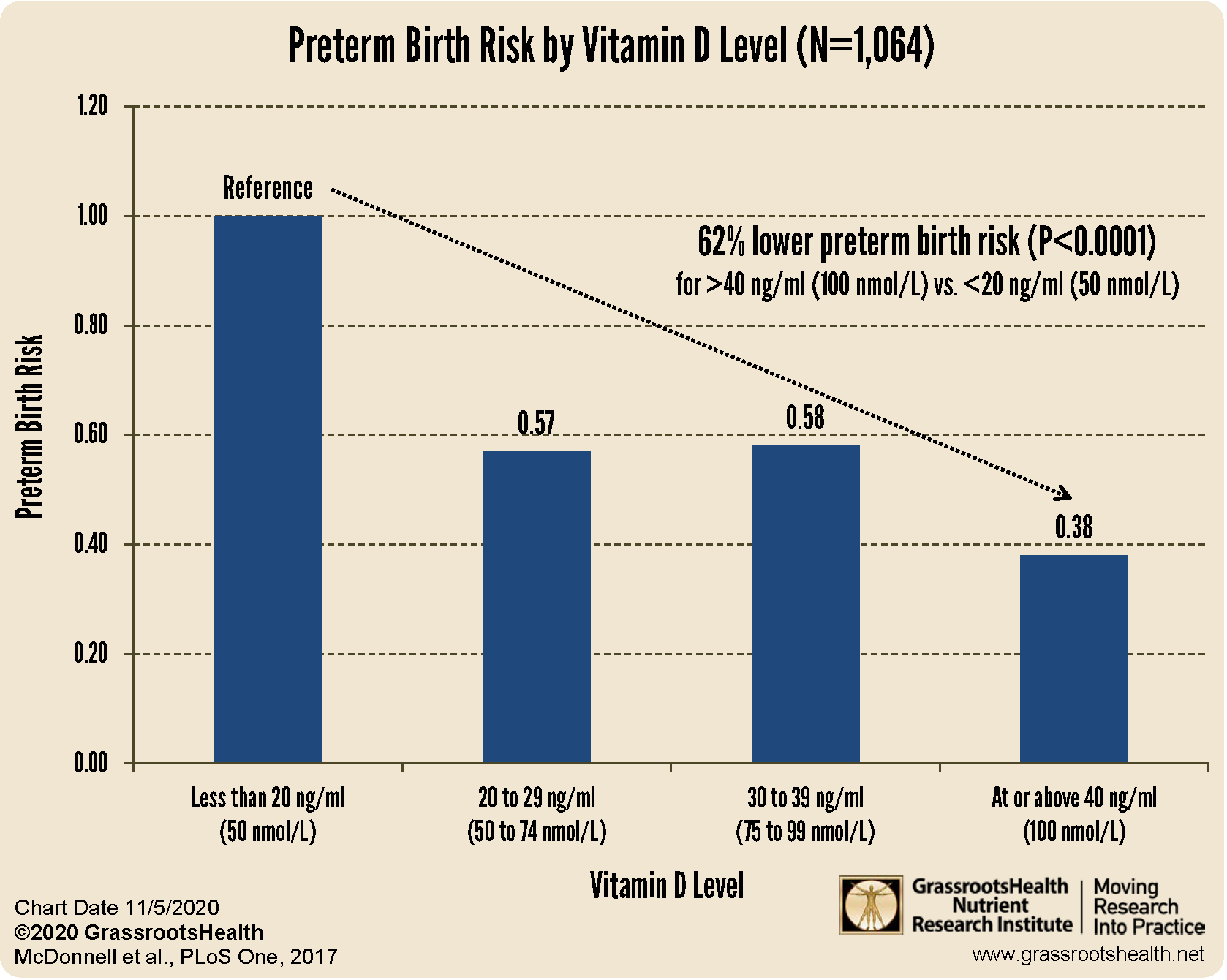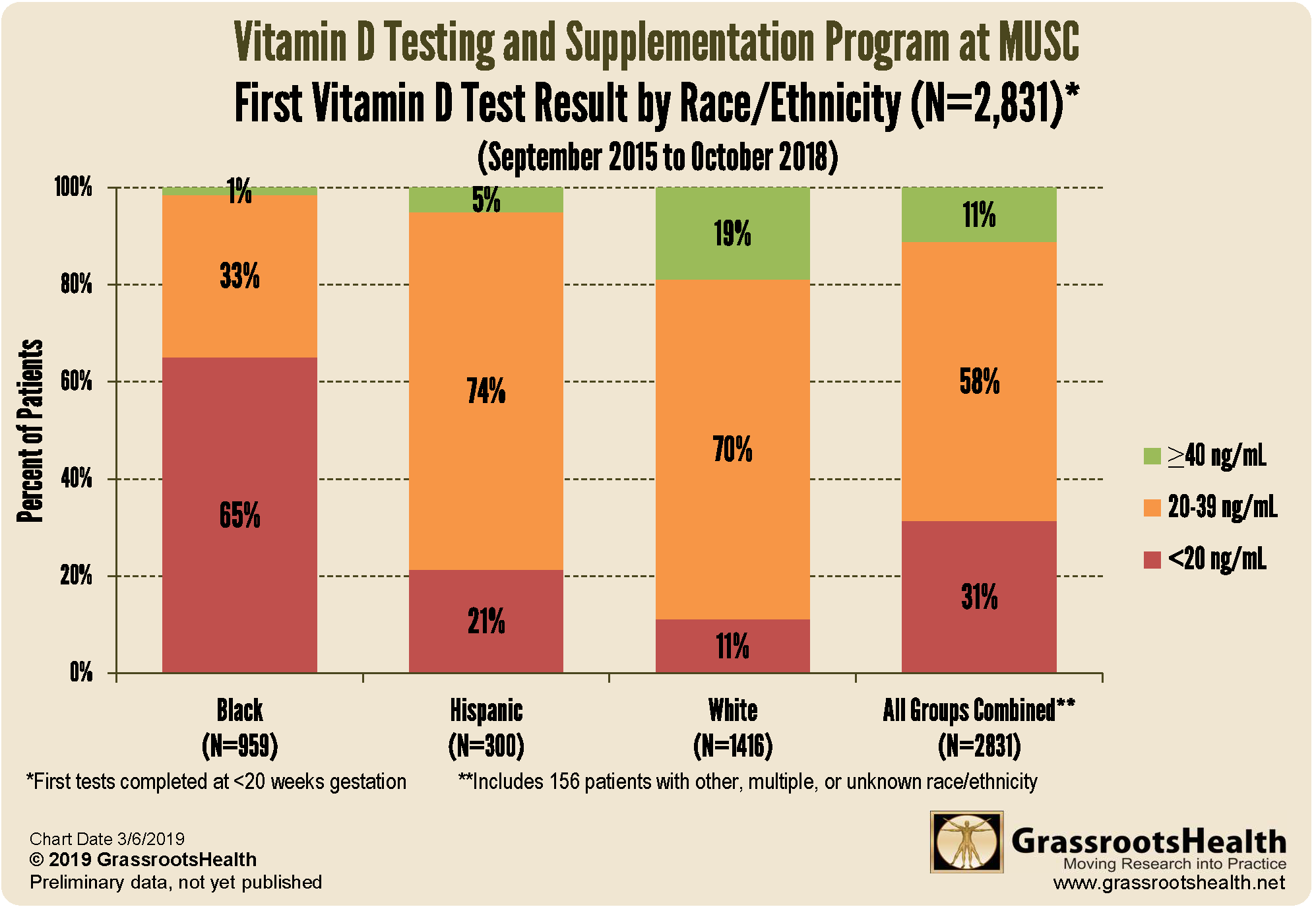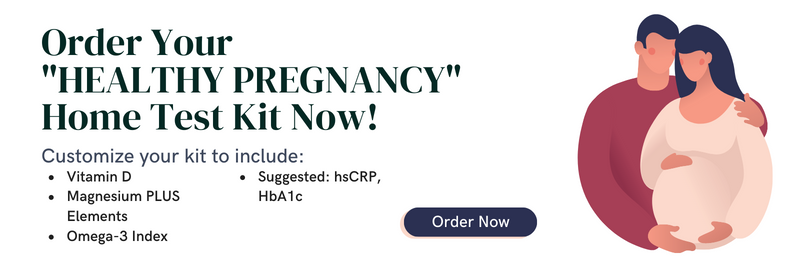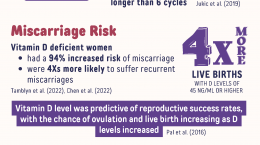Published on November 16, 2022
Preterm birth risk can be reduced drastically, simply by incorporating nutrients such as vitamin D and omega-3s into the prenatal care routine
Key Points
- A recent report from the March of Dimes shows a worsening health crisis for pregnant women and their babies. With preterm birth rates reaching a 15 year high this year, they estimate 30,000 babies will be born prematurely this month
- Getting vitamin D levels to at least 40 ng/ml during pregnancy has been shown to have a great impact on preterm birth rates, with one study showing a 62% lower risk of preterm birth for women with vitamin D levels at or above 40 ng/ml (100 nmol/L) compared to women with levels less than 20 ng/ml
- Another study on pregnant women found that a higher intake of EPA and DHA resulted in an approximate decrease of 70% for early preterm birth, 85% for very low birth weight, and 60% for low birth weight
 This year’s report card on the state of maternal and infant health in the United States, presented by the March of Dimes, shows a worsening health crisis for pregnant women and their babies. With preterm birth rates reaching a 15 year high this year, the March of Dimes estimates 30,000 babies will be born prematurely this month (November). Approximately 15 million babies world-wide will be born prematurely each year, and 1 million will die. In addition, it costs about $4,000 to deliver a healthy baby and about $54,000 to deliver a premature baby.
This year’s report card on the state of maternal and infant health in the United States, presented by the March of Dimes, shows a worsening health crisis for pregnant women and their babies. With preterm birth rates reaching a 15 year high this year, the March of Dimes estimates 30,000 babies will be born prematurely this month (November). Approximately 15 million babies world-wide will be born prematurely each year, and 1 million will die. In addition, it costs about $4,000 to deliver a healthy baby and about $54,000 to deliver a premature baby.
“…the U.S. preterm birth rate increased to 10.5% in 2021 – a significant 4% increase in just one year and the highest recorded rate since 2007… The data also shows persistent racial disparities across maternal and infant health measures that were compounded by the COVID-19 pandemic, making the U.S. among the most dangerous developed nations for childbirth.”
Unfortunately, preterm birth (before 37 weeks gestation) and low birth weight (under 5.5 lbs) are associated with increased risk of health problems for the baby, including respiratory problems, feeding difficulties, jaundice, delayed brain development, increase of cerebral palsy, risk of ADHD and autism, as well as an increased risk of infant death.
62% Lower Risk of Preterm Birth with Vitamin D Alone
As part of Prematurity Awareness Month this November, we want to bring attention to evidence that shows vitamin D status could reduce the risk of preterm birth. In 2017, GrassrootsHealth published a study that assessed the relationship between vitamin D level and preterm birth risk. This analysis included pregnant patients aged 18-45 years at the Medical University of South Carolina (MUSC). MUSC Health is a comprehensive, urban medical center treating a large, diverse population of women. The average age of women seeking prenatal care was 29 years old and 47% were non-hispanic white, 35% were black, 12% were Hispanic, and 6% were multi-racial or other.
The researchers found that women with vitamin D levels at or above 40 ng/ml (100 nmol/L) had a 62% lower risk of preterm birth compared to women with levels less than 20 ng/ml (50 nmol/L) (p<0.0001). This lower risk remained after adjusting for socioeconomic variables.
First Trimester Vitamin D Levels
Pregnant women received routine vitamin D testing at their first prenatal visit. A vast majority (89%) had vitamin D levels less than 40 ng/ml on their first vitamin D test and almost one-third (31%) had vitamin D levels less than 20 ng/ml. Black women had particularly low vitamin D levels; almost all (99%) were less than 40 ng/ml and approximately two-thirds (65%) were less than 20 ng/ml. These vitamin D levels are representative of prenatal vitamin D levels across the United States.
Black women have a 15-20 fold higher prevalence of severe vitamin D deficiency, putting them at much higher risk for preterm birth. According to NHANES data, approximately 68% of Black women have vitamin D levels below 20 ng/ml (50 nmol/L) and at these levels, would be expected to have a 20% preterm birth rate; this is a problem that must be addressed especially for mothers within these groups of darker skin! Research has shown that the gap in preterm birth outcomes between White and Black mothers virtually disappears when vitamin D deficiency is corrected.
Higher Omega-3 Intake Resulted in an Approximate Decrease of 70% for Early Preterm Birth
Last year, the Australian Government officially added omega-3 fatty acid supplementation to their list of recommendations for pregnant women, with a warning issued that low omega-3 levels could increase the chance of preterm birth. The Hospital Research Foundation in Australia is now delegating $500,000 to add omega-3 testing to standard first-trimester screening for pregnant women.
Several studies have demonstrate the importance of omega-3s for pregnancy, such as a study by Carlson et al., in which a higher intake of EPA and DHA resulted in an approximate decrease of 70% for early preterm birth, 85% for very low birth weight, and 60% for low birth weight. When combining data from 9 different randomized controlled trials on omega-3 supplementation and preterm birth, Kar et al. found that omega-3 intake was associated with a 58% reduced risk of early preterm delivery, while a 17% decreased risk of any preterm birth was seen among women who supplemented with omega-3s.
Other studies have shown a relationship between omega-3 intake or status during pregnancy and outcomes such as infant immunity and the incidence of postpartum depression. In fact, Markhus et al. showed that a higher Omega-3 Index at the end of pregnancy greatly reduced the risk of postpartum depression.
Why You Can’t Assume Your Omega-3 or Vitamin D Supplement is Enough
When supplementing with either vitamin D or omega-3s, it is impossible to know how much of a dose might be “right” for one person to the next.
Vitamin D Supplement Dose: Everyone responds differently to vitamin D… by up to 6 times for the same supplement amount! For example, it is possible for a supplemental intake of 4000 IU/day to result in a serum level of 25 ng/ml (62.5 nmol/L) in one individual, and 60 ng/ml (150 nmol/L) in another. A GrassrootsHealth analysis showed that among all adult participants taking an average of 4,000 IU vitamin D per day from supplements, approximately 25% were still below the recommended 40-60 ng/ml.
Omega-3 Supplement Dose: Just as with vitamin D, there is a large amount of variability in the omega-3 status for different people with the same intake amount. For example, our initial analysis showed that the range of response with 1000 mg of EPA+DHA per day was 5.7% to 10.2%. This large amount of variability is similar to what we have observed for vitamin D.
Getting Enough Magnesium and Avoiding Toxic Elements are Also Important for a Healthy Pregnancy
Magnesium is also important to a healthy pregnancy, and getting enough magnesium has been shown to help ameliorate muscle cramping during pregnancy, decrease the frequency of preterm births, low birth weight and small for gestational age newborns, and used as a treatment for preeclampsia/eclampsia. Magnesium in pregnancy has also been associated with metabolic syndrome for the child later in life.
During pregnancy, toxic elements such as lead stored in bones can be released and passed from the mother’s body to the baby which may result in miscarriage, premature birth, low birth weight, learning or behavioral problems, or damage to the baby’s brain, kidneys, or nervous system. Cadmium is another toxic element that can also accumulate in the kidneys and thyroid gland, and can contribute to thyroid issues, kidney disease, infertility, uterine fibroids, and other reproductive tract diseases if the build-up is high enough.
Measure Your Levels of the Above for a Healthier Pregnancy and Baby
Based on the information presented above, measuring your levels of vitamin D, magnesium, and omega-3s may help determine if more of these nutrients might be needed to support a healthy pregnancy and baby. Create your custom home blood spot kit with the following measurements to help determine if you are getting enough of the following nutrients shown to benefit your current or future prenatal health:
- Vitamin D
- Omega-3 Index
- Magnesium PLUS Elements
- Add hsCRP as a marker of inflammation and HbA1c as a marker of blood sugar health, two other important factors influencing prenatal conditions
Don’t forget several other essential nutrients for reproductive health, including the below and many more
- B Vitamins (especially Folate)
- Iron
- Zinc
Having and maintaining healthy vitamin D levels and other nutrient levels can help improve your health and the health of your baby, now and for the future. Enroll and test your levels today, learn what steps to take to improve your status of vitamin D (see below) and other nutrients and blood markers, and take action! By enrolling in the GrassrootsHealth projects, you are not only contributing valuable information to everyone, you are also gaining knowledge about how you could improve your own health through measuring and tracking your nutrient status, and educating yourself on how to improve it.









